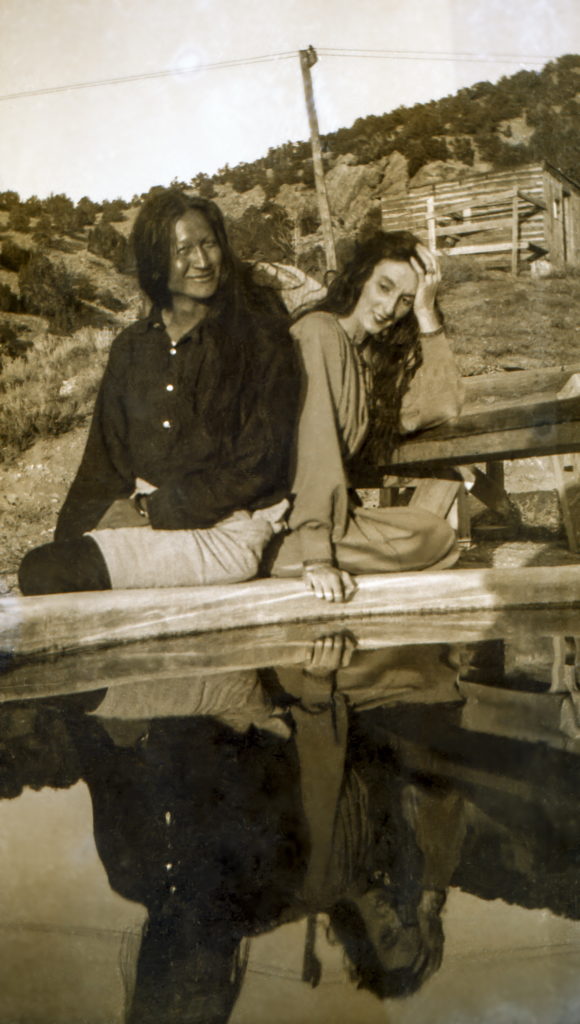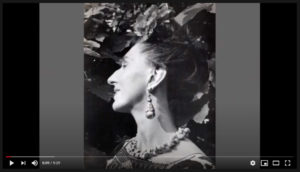About Marjorie
“If there is one 20th-century American artist who deserves the moniker pop culture icon, it should be Marjorie Eaton. Born in San Francisco in 1901, Eaton was first an artist then an actress, shared an apartment with Louise Nevelson in New York City, studied with Hans Hofmann, lived in Mexico with Diego Rivera and Frida Kahlo, was photographed by Dorothea Lange, was one of the first Californians to buy a Paul Klee painting and then played the role of Emperor Palpatine in the second Star Wars movie.” – Joshua Rose, Fine Art Magazine
Biography
Marjorie Eaton 1901-1986
Marjorie Morley Eaton was born in Oakland, California, February 5, 1901, to Dr. George Eaton, an ambitious young surgeon, and his wife, Edith Morley a classical pianist. Her father was working his way toward a medical practice in San Francisco. When Marjorie was a young girl, her mother died of peritonitis leaving George without a wife and Marjorie without a mother.
Marjorie was taken to live with her paternal grandparents in Oakland and stayed with them for two years. Dr. Eaton met and married Edith Cox Eaton, a very successful British couturier in San Francisco. Edith had a profound effect on Marjorie, often taking her to Europe while on fabric and fashion trips for her dressmaking. Marjorie loved her new mother and their life in San Francisco.
Marjorie’s primary education was at Miss Burke’s School for girls where she excelled in all subjects, particularly art. After graduation she joined the prestigious California School of Fine Arts where it became clear she had great talent as a painter. Marjorie would subsequently study with many well-known painters in Italy where she learned to paint fresco. Marjorie next traveled to Paris where she was taught by Andre Lhote. Under his tutelage, her cubist impressionism began to take shape. Back in California, Galka Scheyer must be credited for recognizing Marjorie’s talent as an artist and insisting she continue with her work.
At age 27, living in Palo Alto, CA, at the family home, Marjorie grew restless and in need of artistic stimulation. She drove to Taos, NM, to join her friend, painter Katharine Skeele and other artists who had come to be inspired by the landscape and people. She was one of a handful of women making this pilgrimage into unknown territory.
Standing on a Taos street corner after a torrential rain, Marjorie saw a man beautifully entwined in a white sheet. Completely enthralled, she told Katie, “I’ve seen an extraordinary face, like a Leonardo Da Vinci, I must paint that face.” The man was Juan Mirabal of the Taos Pubelo. He became her model, her love, her lifelong friend and the subject of many of her paintings. It was also in Taos that Marjorie began to take her iconic photographs of Native people.
Eaton said, “I realized I had found my soul when I arrived in Taos. When I first saw the Indians in the rising hills I couldn’t believe I was in the U.S. These were the real people!” For the next three years, Marjorie lived and painted in Taos.
In 1931, Marjorie returned to Palo Alto. She had been promised by Lloyd Rollins, Director of the Palace of the San Francisco Legion of Honor, that if she painted for three years, he would give her a show. Her 1932 exhibition was a combination of her Paris work and her paintings from Taos.
In early 1933, Marjorie went to New York and worked as Diego Rivera’s assistant. She became close with his wife Frida Kahlo, whom she greatly admired. Marjorie said of Diego, “He simply treated me as an equal, he never commented on my work, he just looked, which for me was simply marvelous.” Marjorie met Louise Nevelson in Hans Hofmann’s class at the Arts Students League. They became goods with Archile Gorky, Galka Scheyer, and others in the art world at the time. Marjorie was invited to go to Europe to study with Picasso and Klee, but Hitler’s rise to power at that time made the trip impossible. Shortly thereafter when Diego invited her to come to Mexico. She went and stayed three years. Living at Casa Azul did not afford her enough autonomy and eventually she traveled to a remote Mexican village, Pahuatlan, where she set up her own studio and painted the local people.
Marjorie was very close to choosing Mexican citizenship in 1936, but was called home due to her father’s death. Though she wept to leave Mexico, she knew she belonged in California and decided to settle there. In collaboration with her friend, the great architect Gregory Ain, she designed and helped build by hand an adobe house in Los Altos hills, one of the first passive solar homes in the state.
In 1941, she chose to study acting in Los Angeles at the Max Reinhardt Theater and later in New York with the Moscow Art Theater. Marjorie began performing at the Pasadena Playhouse and on Manhattan stages. She said, “Theater gave me the family I was missing.” Her unusual features and personality soon established her as a character actress on both stage and screen.
Even though Marjorie’s acting career spanned forty years, her paintings remain her deepest and most honest expression. In her Taos and Mexico work, she shows the strong affection she felt for Native American and Mexican people. Marjorie passed away at her family home in 1986.






